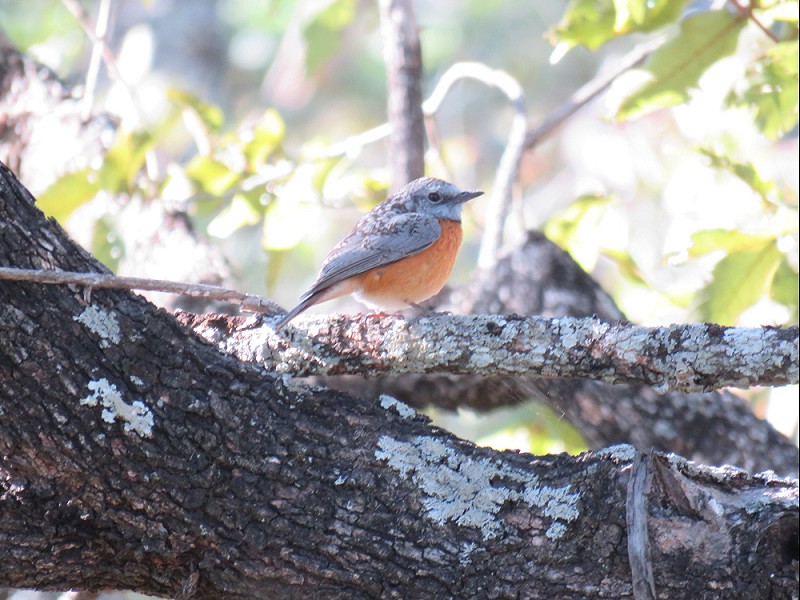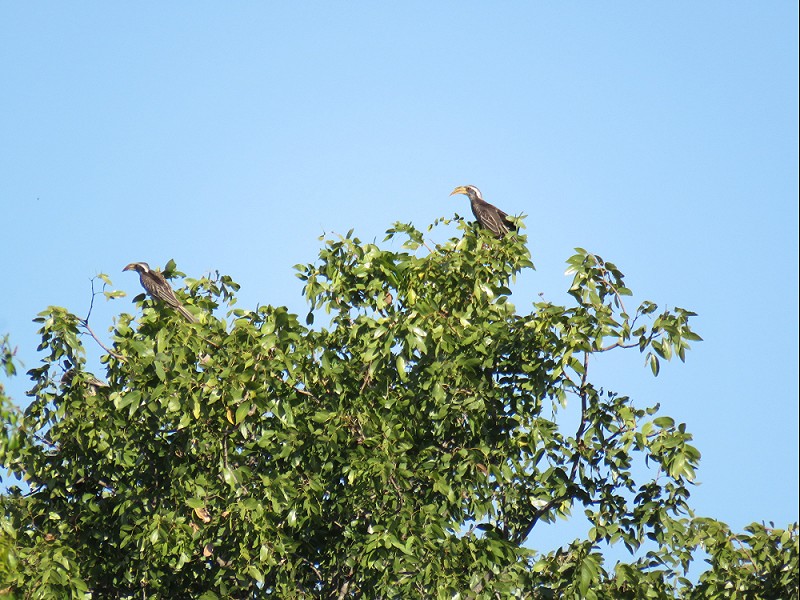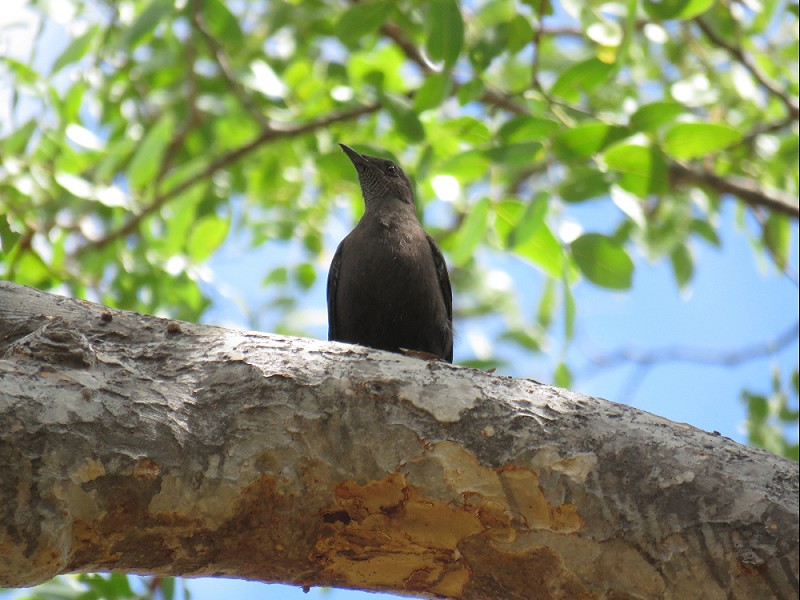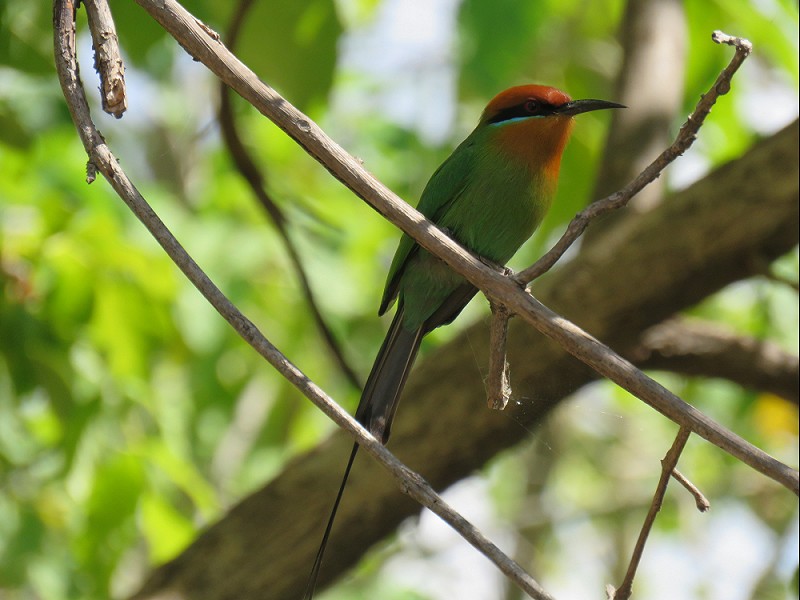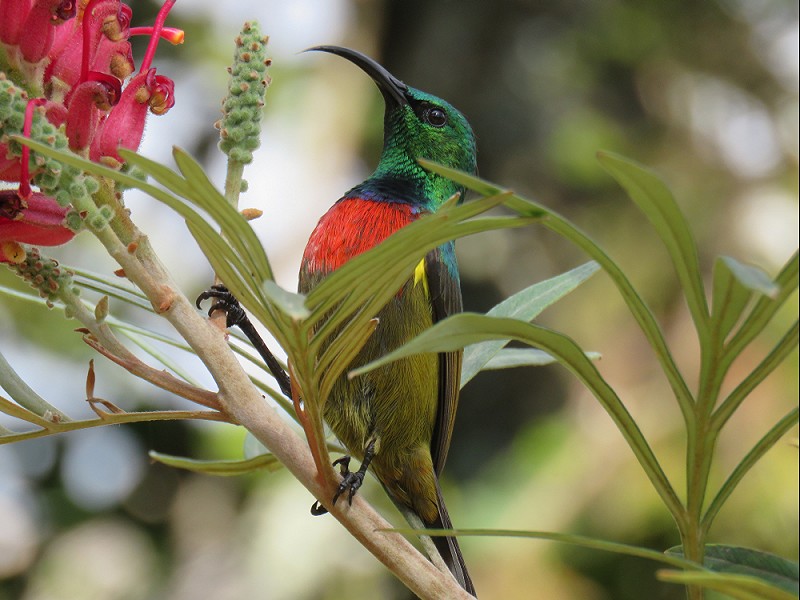Gave soorten allemaal, voor die Bohm's. Roept veel herinneringen op met aanliggend Mozambique.
Arjan's Biggest Year
In 2016 I will attempt the ultimate in global birding, to break the world record in birdwatching, this involves observing more than 6000 species in a single year!
Like my predecessor Noah Strycker I will count heard-only birds, but I will differentiate between heard-only- and seen species to make sure my list stays comparable.
During my 'Biggest Year' I will raise money for the groundbreaking Birdlife Preventing Extinctions Programme in a collaboration with Vogelbescherming Nederland and the Dutch Birding Association. This programme aims to prevent the extinction of all globally threatened bird species by applying an active, innovative and highly effective methodology.
Arjan's Biggest Year is supported by:
May 22 - 28
1 juni 2016 · Arjan Dwarshuis · 7621 × bekeken
PLEASE MAKE A DONATION NOW!
world.observation.org/arjan
www.arjandwarshuis.com/#biggestyear
May 22th MIOMBO BIRDING
After rushing that final morning in Madagascar and a 4 hour drive to Antanarivo Airport, a 4 hour flight to Nairobi, a 3 hour layover, a 3 hour flight to Harare, another 1 hour layover, a 1 hour flight to Lilongwe and finally a 1 hour drive to my hotel where I arrived at 3 AM I met up with Rogier Karskens, my travel companion for the next 6 days. Besides being a fanatic world birder Rogier is also partner at Bruggink & van der Velden, the law firm that has been sponsoring and helping me from the get-go even when my Biggest Year was nothing more than a crazy unfunded plan.
After telling about my adventures in Madagascar and hearing Rogiers stories of his first 5 days traveling through northern Malawi I crashed in bed with just enough time for 2 much needed hours of sleep.
At 4 AM the alarm rang and perhaps not surprisingly it took some difficulties to get out of bed, but that’s how a Big Year works, it comes with the territory and all you can do is to take it like a man.
Our guide Robert drove us straight to the wonderful Dzalanyama Lodge in the Dzalanyama Forest Reserve, about 2 hours from Lilongwe at the border of Zambia. Dzalanyama is famous as being one of the finest site for ‘miombo birding’. Miombo woodland stretches from west to east across a narrow belt that runs through Zambia, Malawi, southern Tanzania and Mozambique and this special kind of dry forest hosts a wonderful selection of unique birds found nowhere else in Africa. The trick of finding these birds is to find a mixed feeding flock better known as a bird party. Eager to find such a flock Rogier and I rushed into the forest!
At first birding was slow and because of the quite heavy wind we struggled to stay on to birds moving quickly through the canopy, but around 2 PM that wind subsided and then we hit the jackpot, that mega-flock any birder dreams of finding. Rogier and I had both seen nothing like it ever before, not even in South America. One mouth-watering species after the other zipped past through the miombo woodland, Anchieta’s Sunbird, Spotted Creeper, Orange-winged Pythilia, its parasitic host the Broad-tailed Paradise Whyda, a pair of the near-endemic Stierling’s Woodpecker and as icing on the cake a cracking Souza’s Shrike. Half an hour later, after this bird-hurricane had subsided, I counted how many species this flock contained and I came to a staggering 34 species in total! I knew Dzalanyama was a magical place, but this was just overdoing it!
With 31 new species for the day I went to bed with a big smile on my face, but just as I was dozing off Rogier knocked on the door: ‘There is a Barred Owlet calling’. And 5 minutes later I was admiring a calling Barred Owlet in front of my room - in my boxer - and with 32 new bird it was finally time to sleep :)
May 23th ‘BOULDER CHAT, THANK YOU’!
Besides for fantastic miombo woodland Dzalanyama is famous for having boulder strewn hillsides which are home to the range restricted and adeptly named Boulder Chat. This monotypic bird was very high on our wish list and that said we were heading up one of those hillsides at first light.
We tried and tried, but no Boulder Chat so we had no other choice than to climb up another hill. Our second attempt proved just as unsuccessful as the first one and despite the now increasing heat and wind we headed up another hill. We were expecting the Boulder Chat to be actually on and between the boulders so all the time we were looking down. Wrong choice because suddenly we heard the liberating sound of a Boulder chat… right above our head in a tree!
After admiring this fantastic species for a while we continued with our usual business, namely miombo birding. As we birded the miombo woodland looking for flocks we were struck by how frequently we encountered illegal logging activities within the park. We saw bike after bike leaving the reserve carrying big piles of miombo on their carrier. I can see that there is no other means of subsistence for these poor Malawian farmers with the current drought following El Nino - Robert told us that this drought will become more severe towards October/November and the situation in southern Malawi could become seriously problematic - but the corrupt fat cats on top who get rich trough this business should be held accountable for their actions. If not Dzalanyama – and in fact large parts of south-central Africa - will lose its precious miombo woodland within the coming decade.
We did not encounter that many new birds this afternoon, but among those were two very special ones, the secretive Lesser Crimsonwing and the unobtrusive Boehm’s Flycatcher.
May 24th TO MVUU!
20 Years ago my parents initiated a funding program for a little school at the edge of Liwonde NP in Malawi. With my primary school and we raised money to build classrooms and my parents collected second hand typewriters, school boards, thousands of pens, volleyball nets etc. Later that year my parents and I – I was 9 years old at the time – travelled down there to personally hand everything over, a very special happening. Back then we stayed at the fabulous Mvuu Camp which made a lasting impression on me as my first foreign birding destination (I of course didn’t know of things like Racket-tailed Rollers at the time, but I saw my first ever Little Bitters here).
Now 20 years later I was going back to this special place and naturally I was very excited, this time Rogier and I would chase all those amazing avian specialties Mvuu is famous for!
We found our first mega bird right at the entrance of Liwonde NP, the scarce Thick-billed Cuckoo, a smashing start indeed!
Our drive to Mvuu Camp took us through the park that is dominated by Mopane woodland and large baobabs. En route we had multiple close encounters with Elephants which are very evident in Liwonde. We also saw our first true specialties, the stunning Bohm’s Bee-eater and the tiny Lillian’s Lovebird.
Finally we arrived at the camp that is stunningly situated on the bank of the Shire River and we enjoyed our welcome drink while watching hippos and our first of many African Skimmers. This place was luckily exactly as I remembered it J
That evening David - our very skilled local guide – took us out on a drive to search for our most wanted bird, one of those all-time African mega birds and Mvuu’s flagship species, the Pel’s Fishing Owl. As night fell over Liwonde NP David took out the spotlight and the search began. He had told us that we should brace ourselves for a long search, but at the first lagoon we checked we suddenly caught a huge buffy owl in the spotlight, a PEL’S! Yes! A dream come true. We watched this beast of an owl for more than 15 minutes as it perched on top of a bush, a magical moment and a great start to our stay at Mvuu!
But the all the excitement wasn’t over, that night I was woken by some scurrying next to my tent, I zipped open my curtain and there, half a meter in front of me stood a huge elephant quietly looking down at me, wow…
May 25th HITTING TARGET AFTER TARGET
Last night we had given David a target list and he was very keen on getting every single one of the much wanted birds on that list.
At daybreak we took a boat out on the river just in front of the lodge where we quickly found 5 stunning White-backed Night-herons, another nemesis bird of mine and a great start. Next we took a game drive vehicle and drove towards some larger patches of mopane woodland, but before we had even left the premises we found both Brown-necked Parrot a calling Livingstone’s Flycatcher and a Dickinson’s Kestrel perched high up on the lodge antenna. 3 targets seen in 5 minutes time!
In the tall mopane woodland we made a stop and against all expectations we found Speckle-throated Woodpecker within 5 minutes after arrival. The stunning – and surprisingly unobtrusive – Racket-tailed Roller took us a little more time, but Rogier ended the waiting game by finding no less than 4 birds together!
Our last target, the smashing black-and-white Arnott’s Chat was the next one of the list and then it was time for a delicious lunch back at the camp.
In the afternoon we went to the other side of the river to look for a bird that was still new for Rogier, the Brown-breasted Barbet and since we’d seen every potential new species for my Biggest Year we could take it easy. Still we managed to find this stunning barbet within our first 15 minutes after our arrival on the opposite side of the river and after that quick success we spend the remaining 2 hours of daylight boating on the Shire River.
All the targets in the bag, a cold beer in the hand, a beautiful African sundowner, not even a gust of wind and only the sound of birds and hippos in the background, life just doesn’t get any better.
May 26th LEAVING LIWONDE
After one last delicious Mvuu breakfast we began our journey towards the Zomba Plateau. As we drove through Liwonde NP we made several stops to enjoy scope views of Brown-necked Parrots and Lillian’s Lovebirds.
In the miombo covered hillsides above Liwonde Town we made a stop because we’d heard rumours that Cinnamon-breasted Tit – a difficult to get species anywhere and a rare bird in Malawi – could sometimes be found in these woods. Half expecting not to find anything we were pleasantly surprised when suddenly a Cinnamon-breasted Tit popped up in a small mixed flock, what a fantastic unexpected find!
After checking in at the Luxurious Sunbird Kuchawe Inn – they had kindly sponsored us an overnight – we had the whole afternoon to look for the endangered Yellow-throated Apalis and some other specialties that manage to cling on in several tiny patches of montane forest. Deforestation in this part of Africa has been severe to make way for tea- and pine plantations and the situation around the south Malawian highlands seems especially bad, especially if you consider that these barren hills were once covered in lush forest all the way to the lowlands.
It took us about an hour to find the stunning Yellow-throated Apalis skulking through some vine tickets, but the equally endangered Thyolo Alethe didn’t give itself up so easily and subsequently had to wait for tomorrow.
May 27th HARD WORK FOR THE WHITE-WINGED APALIS
Before breakfast we made a round through the depressingly small forest patches in de vicinity of the Kuchawe Inn, this materialized in a heard only Thyolo Alethe and another Yellow-throated Apalis.
After breakfast we drove down to Zomba town and onwards to Thyolo Mountain, the type locality for Thylo Alethe. Most of the forest on Thyolo Mountain has been cleared, but some tiny patches remain in a far corner of a tea-estate.
We checked in at a classically British styled hotel and raced to the largest forest patch where we began our search for the rare and beautiful White-winged Apalis. At the beginning we were quite hopeful as we encountered multiple large mixed species flocks, but none produced the Apalis, we did found a pair of Thyolo Alethe around an antswarm.
We spent the whole afternoon meticulously searching these forest patches, now and then playing the tape, but no response. Finally we got a response, not that far away, but it had been calling – and not moving – for quite some time it became quiet… This beautiful bird is not one that you want as a ‘heard only’.
May 28th GOODBYE MALAWI
We had 3 hours left before we had to drive to Blantyre airport, so to optimize our chances for the Apalis we hired Lamek, a young local bird guide. As it slowly got light it didn’t look good, there was thick mist all around us.
We tried hard at multiple different locations around the thee-estate, but even Lamek couldn’t help us. We didn’t see or hear any Apalis and the only good bird was a Zambezi Indigobird (inside the forest flocking with its parasitic host, the Red-throated Twinspot).
At the airport I said goodbye to Rogier and Robert and boarded my plane to Johannesburg, next South Africa!
Arjan Dwarshuis
PLEASE MAKE A DONATION NOW!
world.observation.org/arjan
www.arjandwarshuis.com/#biggestyear
Discussie
Gebruikers van het forum gaan akkoord met de forumregels.




















